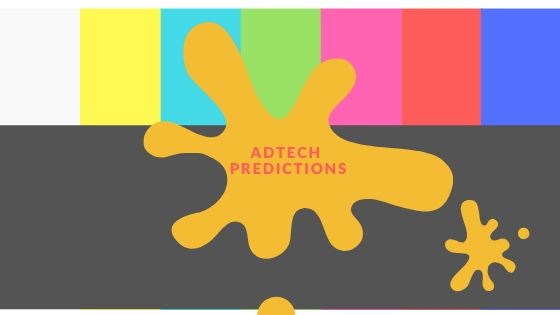It’s been 25 years since the first digital ad appeared online. Since then, the fundamentals remain the same—to target audiences with a clearly communicated message and take them on a journey from initial interest to conversion—but ad tech has evolved so that brands can now analyze, create, target, and scale audiences in totally new ways.

However, as more digital channels become accessible with new optimizations, brands feel overwhelmed and customers feel distrustful of advertisers. Let’s look at the main sins marketers face.
The First Sin: Losing Sight of Audience Data
Data is the lifeblood of digital advertising. The ability of brands to fully harness their data is hindered by fragmentation. Advertisers have a hard time combining, activating, and enriching their data when it is in silos. This hinders efficiency and productivity. The degradation of third-party cookies announced this year brings legitimate concerns around advertisers’ ability to target users consistently across the web. Many organizations use widely different taxonomies, which further confuses.
The Second Sin: Wasting Your Media Investment
The World Federation of Advertisers (WFA) estimates that up to 30% of advertising is unseen by consumers, impacting about 21 trillion online ads annually. Fraud remains a persistent scourge in digital advertising. Due to a lack of safeguards, ad fraud is expensive and pollutes performance reporting with false results.
The Third Sin: Layers of Tech that Create Inefficiency
WFA estimates that 55% of ad budgets invested in programmatic media buying is taken up by intermediary third parties before any money gets to publishers. This “tech tax” means that $30 billion of the $63 billion in media bought programmatically is lost to the tech tax.
Robust digital ad campaigns require more capabilities. Each new ad tech tool means more expense. The cost of harnessing new features eats into the efficacy of each ad dollar. To stay on top of innovations, advertisers find themselves partnering with more service providers and adding layers of complexity.
The Fourth Sin: Tech Platforms That Don’t Talk with Each Other
Working with multiple vendors results in reporting discrepancies (in requests, clicks, impressions, and conversions). While a 10% discrepancy between systems is commonly deemed acceptable, many discrepancies are greater due to synchronization issues. Advertisers do not have time to explain why data doesn’t match.
The Fifth Sin: Forgetting that Time is Money for Marketers
Sync time between ad tech vendors can range from 15 minutes to hours or days. Latency means lost opportunities and decreased insight into consumer behavior. Marketers need timely updates in order to reactively capture and engage customers in a timely fashion. Appropriate synching means knowing if a particular user changes from a passive prospect to an active purchaser. It means engaging in more relevant storytelling.
The Sixth Sin: Building Silos and Not Teams
Sedulous Consulting says team silos are the biggest organization hurdle when it comes to seamless customer experiences, with 41% of customer experience professionals mentioning it as a “significant barrier.” Silos make alignment and asset collaboration different. And it’s nearly impossible to maintain up-to-date overviews of campaign statuses.
The Seventh Sin: Complex and Fragmented Workflows
Advertisers jumping from dashboard to dashboard and platform to platform end up performing redundant tasks. This consumes time and decreases efficiency.
But, not all is lost and there is hope for redemption. How can we foster trust, transparency, and clarity?
Brands need to assess their needs and prioritize.
Seek out tech partners that facilitate collaboration across the client, agency and internal teams. Choosing an integrated platform that gives brands a single UI, faster activation, and more time to spend on strategy means a reduction in the complexity of workflows and improves the advertising experience. Brands then only have to train their staff to use one tool instead of seeking experts in numerous tools. And it will help address all of the above sins.











